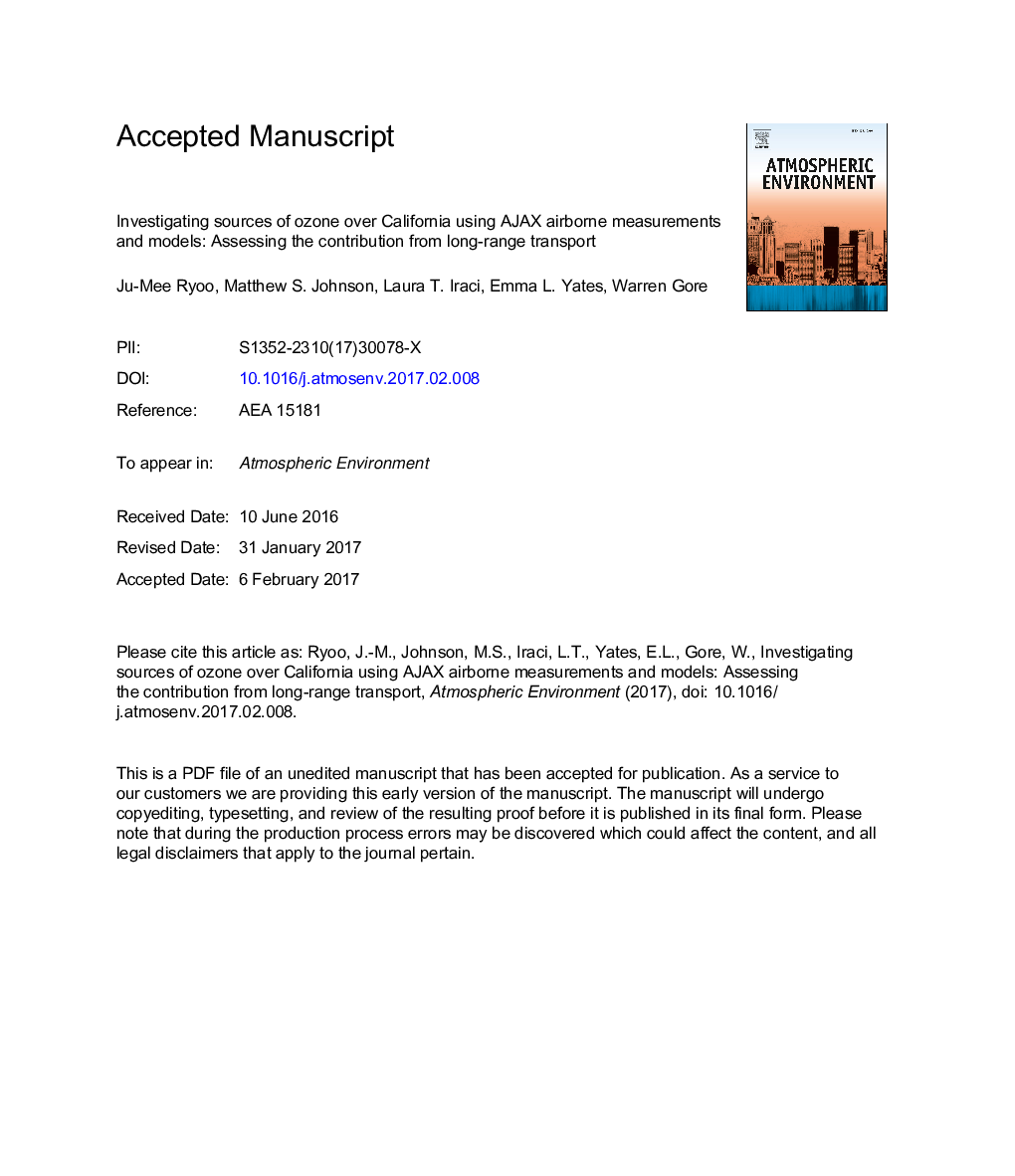| Article ID | Journal | Published Year | Pages | File Type |
|---|---|---|---|---|
| 5752963 | Atmospheric Environment | 2017 | 51 Pages |
Abstract
The back-trajectory model simulation demonstrates the air masses of interest came mostly from the mid troposphere (MT, 76%), but the contribution of the lower troposphere (LT, 19%) is also significant compared to those from the upper troposphere/lower stratosphere (UT/LS, 5%). Air coming from the LT appears to be mostly originating over Asia. The possible surface impact of the high O3 transported aloft on the surface O3 concentration through vertical and horizontal transport within a few days is substantiated by the influence maps determined from the Weather Research and Forecasting-Stochastic Time Inverted Lagrangian Transport (WRF-STILT) model and the observed increases in surface ozone mixing ratios. Contrasting this complex case with a stratospheric-dominant event emphasizes the contribution of each source to the high O3 concentration in the lower altitudes over CA. Integrated analyses using models, reanalysis, and diagnostic tools, allows high ozone values detected by in-situ measurements to be attributed to multiple source processes.
Related Topics
Physical Sciences and Engineering
Earth and Planetary Sciences
Atmospheric Science
Authors
Ju-Mee Ryoo, Matthew S. Johnson, Laura T. Iraci, Emma L. Yates, Warren Gore,
